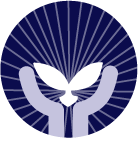Amanda Schubert
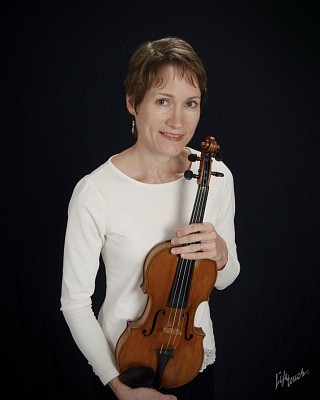
Amanda Schubert studied violin with her father, Lacy McLarry, from age three through college, receiving a bachelor’s degree in violin performance from Oklahoma City University. She holds a master’s degree in violin performance from the University of Wisconsin-Madison, where she studied with Norman Paulu and trained extensively with the Pro Arte String Quartet. Mrs. Schubert holds a teaching certificate from the Talent Education Research Institute, Matsumoto, Japan, where she studied with Shinichi Suzuki. She was a member of the Honolulu Symphony Orchestra for eighteen seasons. For fourteen years, she served on the violin faculty of the Brevard Music Center Summer Music Festival in North Carolina. She currently freelances extensively in the Central Texas area, is Principal Second Violin of the Temple Symphony Orchestra, and is the violist of the Temple Symphony String Quartet. Mrs. Schubert’s musical studies and performances have taken her to Europe, Canada, Mexico, Japan, and China. As soloist she has performed with the Oklahoma Symphony Orchestra, the New Lyric String Quartet, the Xalapa State Orchestra in Mexico, and the Temple Symphony Orchestra. Mrs. Schubert has taught violin for over forty years to students of all ages. She is a Suzuki Teacher Trainer and is the founder and Director of the Suzuki Academy of Waco. She resides in Central Texas with her husband, Mark, a trumpet player. Their two daughters, Augusta and Alanna, have grown up studying with their mother and are both aspiring violinists.
Name in Japan: Amanda McLarry
Other places lived since Japan: (Since in Japan as a child): Emporia, Kansas; Norman, Oklahoma; Oklahoma City, Oklahoma; Honolulu, Hawaii. (Since in Japan as a Kenkyusei): Honolulu, Hawaii; Waco, Texas.
Instrument studied in Japan: Violin
Dates in Japan: Summer 1971 (as a child); 1990-1992 (as a kenkyusei)
Years and locations of workshops with Dr. Suzuki that were outside of Japan: 1978 San Francisco; 1979 Munich, Germany
Memories
My Path to Matsumoto: Personal Experiences with Dr. Suzuki at Different Stages of My Life
by Amanda Schubert
Age 1: I’m sure I met him when he came to Emporia, Kansas in 1966 to do a workshop with my father Lacy McLarry’s Suzuki program at Kansas State Teachers College of Emporia. I don’t remember as a one-year-old, but I’m sure I caught the excitement, absorbed the music, and felt his love for children. I am sure of this because the essence of the Suzuki philosophy is the fact that we are shaped by our environments. And he was very much a part of the environment, along with my parents and brother, the other families whose children were studying with my father, and the leadership at the college. The environment in Emporia was one of excitement, enthusiasm, and emersion in the Suzuki approach.
Age 3: Dr. Suzuki came again in 1968 to do a week-long workshop with my father’s Suzuki program in Emporia. This was just before I started lessons with my father. I remember Dr. Suzuki sitting in the back seat of our Valiant car, while I stood in the front passenger seat (before seat belt laws), while my dad sat in the driver’s seat. We were in our driveway ready to go, and I turned around to look at Dr. Suzuki. He leaned forward and gave me a big smile. I felt at that moment that this man was a very good and kind man. During the week, Dr. and Mrs. Suzuki were guests at our house and stayed downstairs in our den. As I look back on why I would keep this in my memory, I think it is because we remember things that make an important impression on us. The fact that they stayed with us, and I loved that they were with us, impresses upon me the personable nature of the Suzukis, and how human they were in interacting with others. Also, it impresses upon me that that was at a time when he was approachable to be with, to talk to, to share ideas with. I know that in later years, his popularity and busy schedule made it difficult to approach him for a relaxed conversation. Another vivid memory I have of this visit from Dr. Suzuki is when we had a party at our house for Dr. and Mrs. Suzuki and all the students and parents. The children played outside. We had a toy surrey that we pedaled around in our driveway. It had a front seat and back seat. Dr. Suzuki rode in the surrey with us children. He played with us. He could relate to us as children, and we were drawn to him because he was fun. He respected our perspective on life. So naturally we had tremendous respect for Dr. Suzuki.
Age 6: When I was six years old, my mother, father, and my brother, Royce, traveled to Japan. We spent the summer of 1971 in Matsumoto so that my father could observe Dr. Suzuki in his home environment. Someone might wonder what a six-year-old would remember about such an experience. A child at that age, as Dr. Suzuki well knew, is very impressionable. Though I know many people who do not remember much from that period of their lives, I remember very well. I do not know why I so clearly remember things; perhaps it is the development of the memory through the Suzuki approach. I remember events, feelings, sights and smells, locations and people who have been a great influence on me. At age six, I understood that we were making this big trip to see Dr. Suzuki so that we could learn from him. In retrospect, I realize that going to a foreign country to do this was invaluable in and of itself—to experience the Japanese culture, and to interact with Japanese children and adults with the Suzuki philosophy embracing us all.
During that summer, Royce, who was eight years old, was learning vibrato. My father was teaching him through a step-by-step process. Dr. Suzuki wanted to learn this vibrato method and invited my father to demonstrate the ideas for the kenkyusei (research students/teacher trainees). Throughout the summer, as Royce progressed through his vibrato exercises, he and my father demonstrated the process at Dr. Suzuki’s teacher training sessions. This is one example of how Dr. Suzuki was always eager to learn from others to expand his own teaching. I remember observing these sessions and understanding that we are all in this great learning experience together. We were a team of sorts, learning from each other and sharing.
One day that summer, Dr. Suzuki asked my father to play for him. My father played a Kreisler piece. Dr. Suzuki did not give my father a lesson. He just said, “Ah, beautiful tone.” Tone was one of the most important parts of teaching for Dr. Suzuki. Shortly after we arrived in Matsumoto, Dr. Suzuki asked Royce and me to each prepare four solo pieces to perform for him. We didn’t know when this performance would be. But after some time passed, he informed us that it was time for our special concert. We each performed our chosen pieces on the stage at the Talent Education Institute (now known as TERI). My pieces were from Book 1. I remember that part way through my performance, Dr. Suzuki said, “Big tone!” Immediately, I played with bigger tone, for I did not want to find out what would happen if I didn’t. This is all captured on a cassette tape. I learned that tone is most important, and almost every aspect of playing can be related to tone.
Another time that summer, Royce and I played a few pieces together for Dr. Suzuki. Royce was a very solid player, being eight years old and confident. I looked up to him as the one who knew how to do it right. We were playing Gossec Gavotte, and I was a little unsure about certain aspects of the piece. Therefore, I would turn and look at Royce to see what was next. Dr. Suzuki made us play back-to-back so that I could not see Royce. What I learned from that moment was that I better really study my pieces and not rely on anyone else.
One day, Royce and I participated in a group lesson with some Japanese children. Dr. Suzuki had each of us one at a time play a tricky passage in a Book 2 piece. He went quickly down the row of students. He did not dwell on any one student’s performance, even when there was a mistake. My performance was not perfect, and I was worried he would stop at me and give me a scolding of sorts. But he kept going down the row of students. From Dr. Suzuki, I realized a teacher can be demanding, yet cheerful and kind at the same time. As a child experiencing this, I was not embarrassed or really scared. I was only inspired to play even better.
Dr. Suzuki was not only genuine and true to his philosophy in violin lessons, demonstrations, and performances, but also in all aspects of life. I remember enjoying a Coca Cola with him in the plaza area outside of the institute. He would talk with my mother and father about various ideas, while enjoying the time spent with Royce and me. We also enjoyed some meals with him and Mrs. Suzuki. He was always happy to see us. One day that summer, I lost my first tooth. Dr. Suzuki was so happy and excited to see the new hole in my mouth. In retrospect, I realize from those experiences with Dr. Suzuki that life is about the whole person and how we treat others.
Ages 13 and 14: My family went to the International Suzuki Conventions in San Francisco and Munich respectively. Dr. Suzuki was always at the international conventions. We observed him giving lessons and speaking to the audience about the Suzuki Method. At every lesson I saw, he focused on tone. At these conventions, the crowds and busy schedule made it very difficult to even approach Dr. Suzuki for an extended conversation. But he still managed to slip a few chocolates to children. As always, he had a sort of aura which drew children to him. As I look back on these events, I am again reminded that Dr. Suzuki created an atmosphere of excitement and enthusiasm which was contagious. We all loved being there and learning. This is the kind of atmosphere I want for my students and their families.
Age 25-27: At age 25, I went to Matsumoto as a kenkyusei. Here is what led to that decision: When I was in the seventh grade, my brother and I played a recital at my school, and a little girl a few years younger than I heard it and wanted me to teach her violin. I was so excited and asked my father to teach me how to teach. He said the first thing I needed to do was read Nurtured by Love, which I did. Then he taught me very thoroughly how to go about teaching. So, I started teaching when I was thirteen, and I loved it. I taught violin through junior high, high school, and college. After receiving undergraduate and graduate violin performance degrees, and after playing one season with the Honolulu Symphony, my love for teaching led me to Matsumoto to be immersed in the Suzuki philosophy. I studied with Dr. Suzuki every day, seven days a week. I had a weekly individual lesson, a daily group lesson, and I performed every week on Monday Concert. I also had a listening class with Mr. Aoki, a musical expression class with Mr. Takahashi, and a shuji (calligraphy) class with Mr. Akiyama. Through the kindness and devotion of these master teachers, I absorbed the subjects without exams, deadlines, or pressure. I observed Dr. Suzuki teach countless lessons, and I observed many other fine Suzuki teachers in Japan. I regularly observed Miss Mori in Matsumoto, and I traveled regularly by train to Nagano to observe Mr. Denda. In Osaka I observed Ms. Nakajima, and in Tokyo I observed Mr. Hirose. I performed as a soloist at the National Teachers Convention in Hamamatsu, and I performed with the thousand or so students at the National Concert at the Budokan in Tokyo. I enjoyed the sento (public bath house), where I could get nice and warm in the winter, and I tried to stay warm with my kerosene heater. This is to say that I was immersed in the Suzuki philosophy and the Japanese culture.
As stated above, I had a weekly individual lesson. These were not private lessons. Dr. Suzuki and other Japanese teachers gave master class lessons. This is also how I grew up studying with my father. The weekly lesson was always with other students and their parents present. This is also how I prefer to teach. There are no disadvantages to the master class lesson. In my training classes, I teach the advantages of master class lessons. I believe the master class lesson is an important teaching element from Dr. Suzuki that we can embrace.
In my training sessions with Dr. Suzuki, we never had any sheet music, music stands, or teaching manuals. We just played and listened to each other. Everything was memorized. Dr. Suzuki would come to the group lessons with a “new idea!” We would work on his ideas through tonalization and pieces. As Dr. Suzuki taught, we learned through observation, doing, and listening to the sounds we were producing. And, of course, Dr. Suzuki had us practice techniques and pieces many times, for we learned through repetition. I also enjoyed observing other Japanese teachers work in this manner with their students. I keep these elements at the forefront of my teaching.
While studying with Dr. Suzuki, I heard each kenkyusei many times, day after day. I knew their playing very well. One day, Dr. Suzuki had us do a listening experiment, where each of us played the same passage, one at a time, taking turns using the same violin. We could not see who was playing. We were allowed only to listen. It turned out that when we did this experiment, I knew exactly who was playing each time. Even when the instrument was the same, the tone and expression of each kenkyusei were unique. This was an example of “Tone has a living soul,” as Dr. Suzuki would say.
Dr. Suzuki allowed us to make discoveries for ourselves. I could sense he observed what each one of us needed to grow, not only in our technical and musical abilities, but also in our personal development. At one lesson, as I was playing through my piece, Dr. Suzuki said, “It is something in the wrist.” Though he occasionally gave us special exercises, he also had faith that we would discover the solution through our regular practice and repetitions, following the Mother Tongue approach of watching and listening. As I went away to think about my bow arm and practice, I did figure it out and realized he was correct, as usual. The freedom I developed in my bow arm was directly related to that lesson.
Another revelation I had was why Dr. Suzuki required us to take shuji (Japanese calligraphy) class. At the beginning of each shuji lesson, I made my own ink by rubbing a solid ink bar into a small amount of water until a good consistency was created. Then I dipped my brush into the ink and wrote large characters on a blank sheet of paper, copying characters that the teacher had written out for my lesson that day. My characters were big because I was a beginner. I noticed that the Japanese kenyusei were using small fine brushes and making delicate small characters on their papers. At first, many times my characters had pooling ink puddles and clumsy swish strokes. I would take each finished paper to the teacher, who would critique and guide my work, giving instructions for improvement. So, back to work I would go to try again. Week after week I would work on my shuji. I discovered that the brush stroke was related to the bow stroke, with the balance of the brush or bow in the hand, and the free movement of the hand and arm. Persevering, experiencing the making of the ink, the order of each lesson, and the patience of my teacher not only helped me develop my skills, but also instilled in me a deep reverence for a beautiful Japanese art form. I am so grateful that shuji was part of my course work.
On an even more personal experience, sensing I needed to eat more while I was busily going about my studies, practicing, and riding my bicycle all over town to teach English, Dr. Suzuki invited me to his office for a delicious o-bento lunch. He savored each bite in a slow relaxed way, and commented on how delicious it was. That was all. He modeled everything we needed. I have never forgotten his unspoken suggestion to take care of myself.
I have only briefly described my experience in Japan. So, I hope that whoever is reading this will also read the many other accounts of Matsumoto Suzuki Graduates and Pioneers on the ISA website. Also, I cannot bring this to a close without mentioning Mrs. Suzuki. She fully supported Dr. Suzuki and the Suzuki Method. She translated Nurtured by Love into English, and she was very aware of the business aspects of the growing Suzuki movement, which allowed Dr. Suzuki to focus on his teaching. With Mrs. Suzuki’s help, my family traveled to Japan in 1971. She helped us make travel arrangements using long-distance phone calls. Later, as a kenkyusei, I observed that her support for Dr. Suzuki and the Suzuki movement never wavered. She and Dr. Suzuki will forever be guides for me. The Suzuki Method has influenced my entire life from the very beginning to the present. I am deeply thankful to Dr. Suzuki for this life-long journey.
Photos in Matsumoto
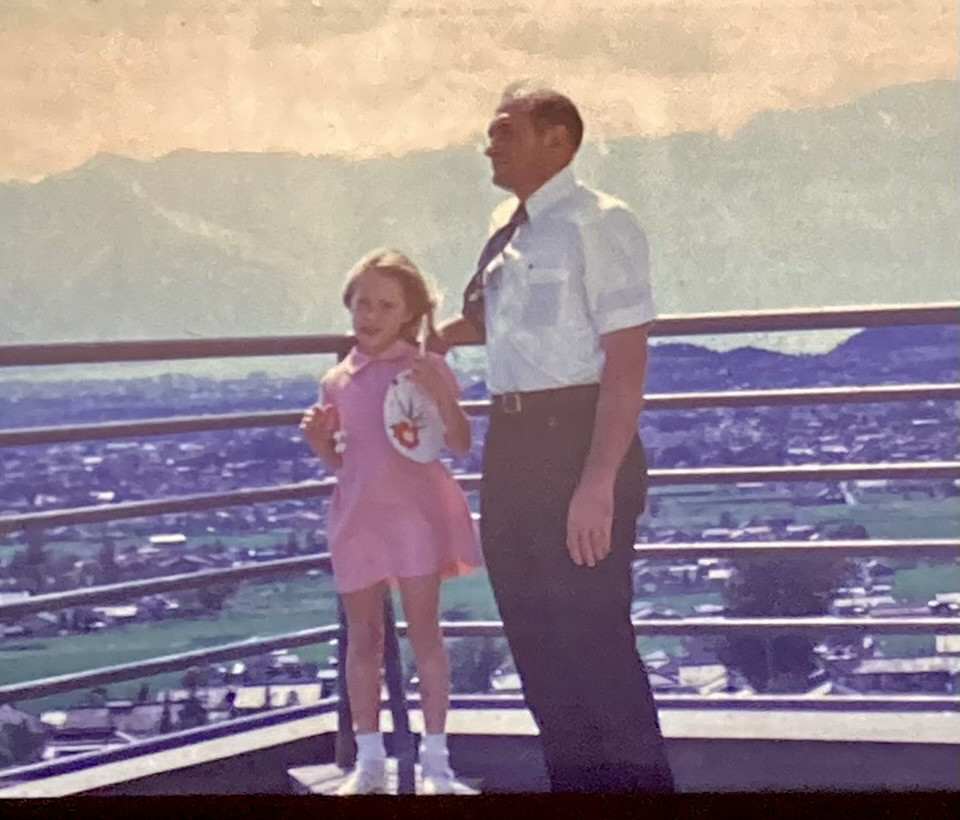
Amanda (age 6) and her father, Lacy McLarry, in Matsumoto, 1971
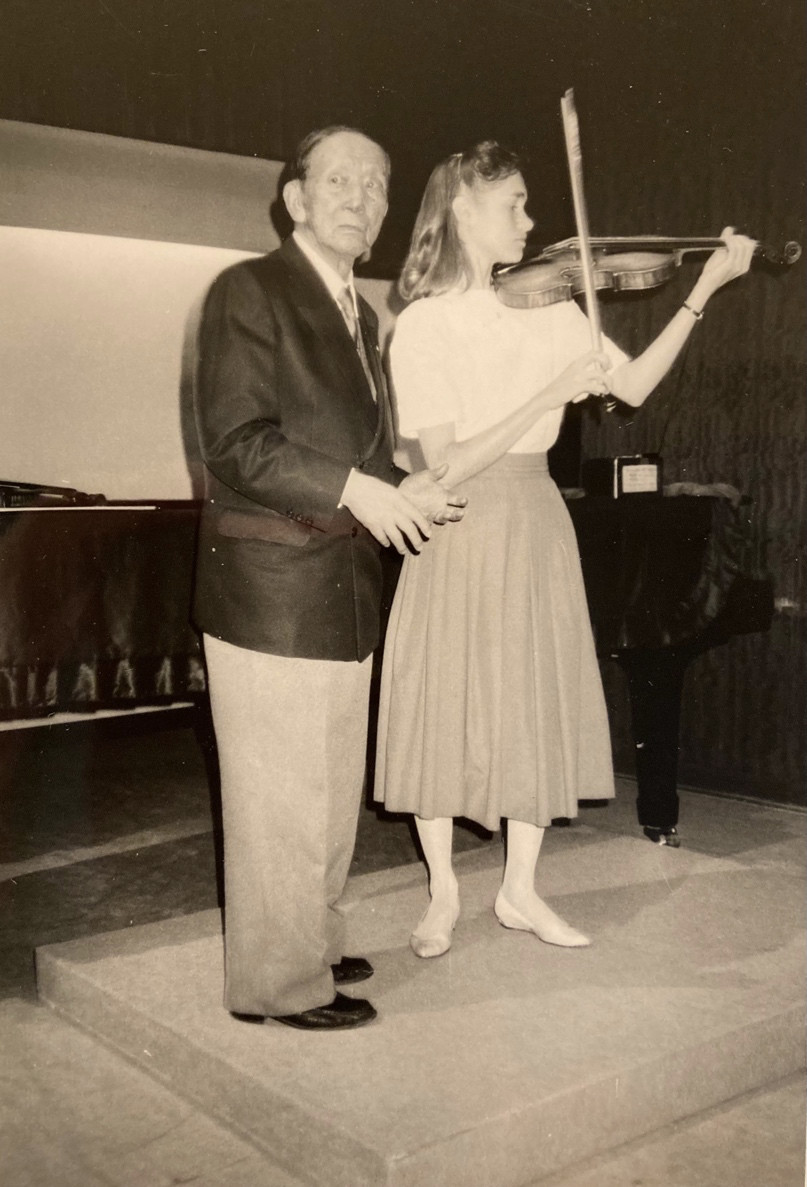
Amanda as a kenkyusei with Dr. Suzuki
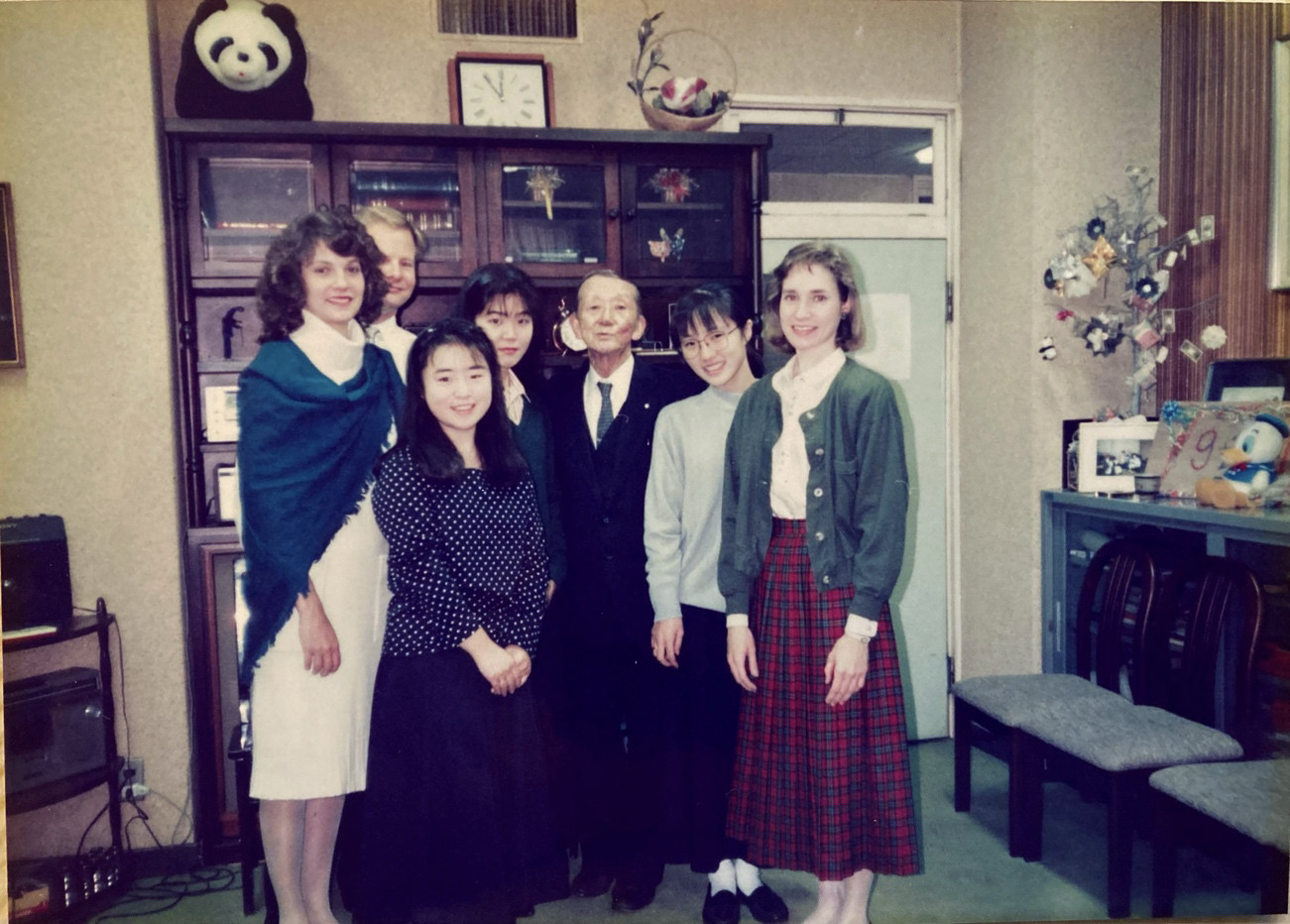
Amanda (rt.) with group of kenkyusei and Dr. Suzuki
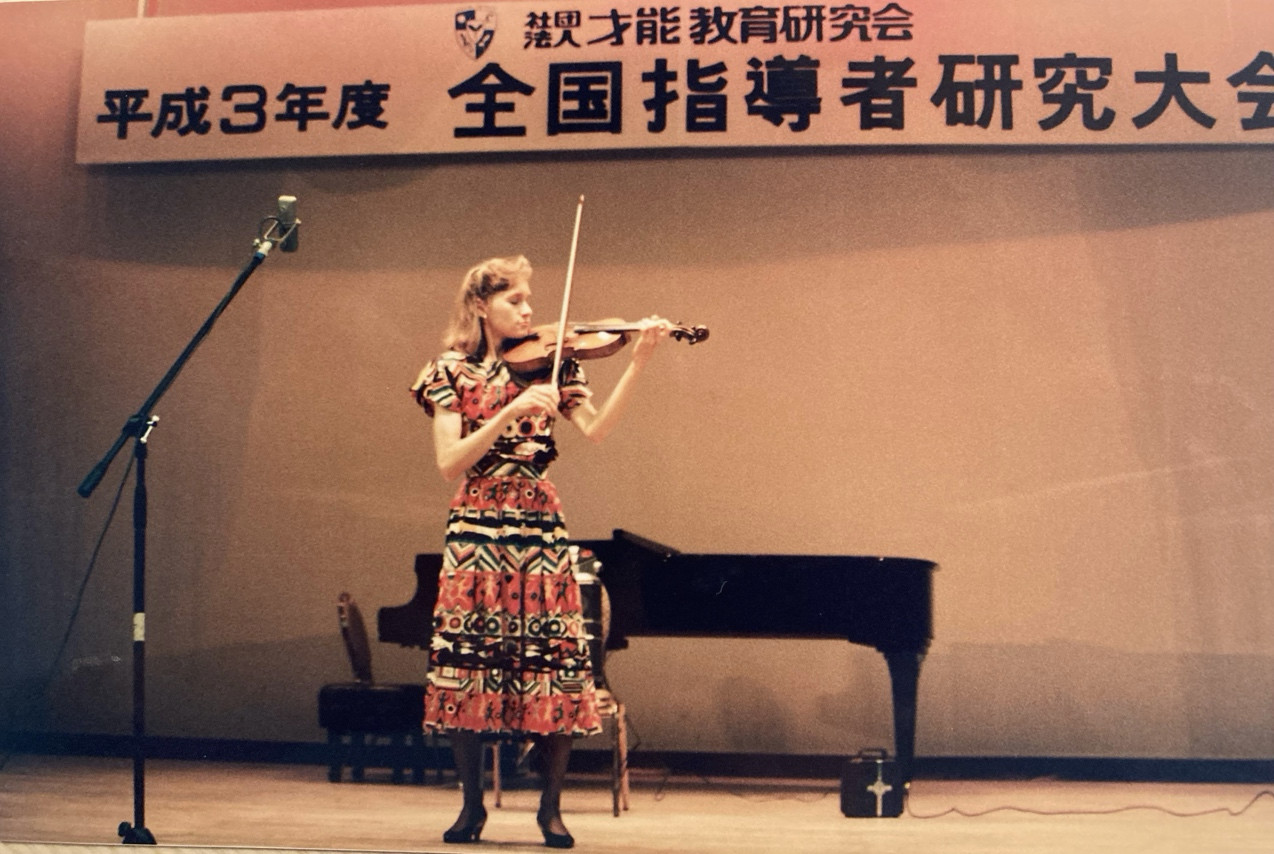
Amanda playing at the National Teachers Convention in Hamamatsu
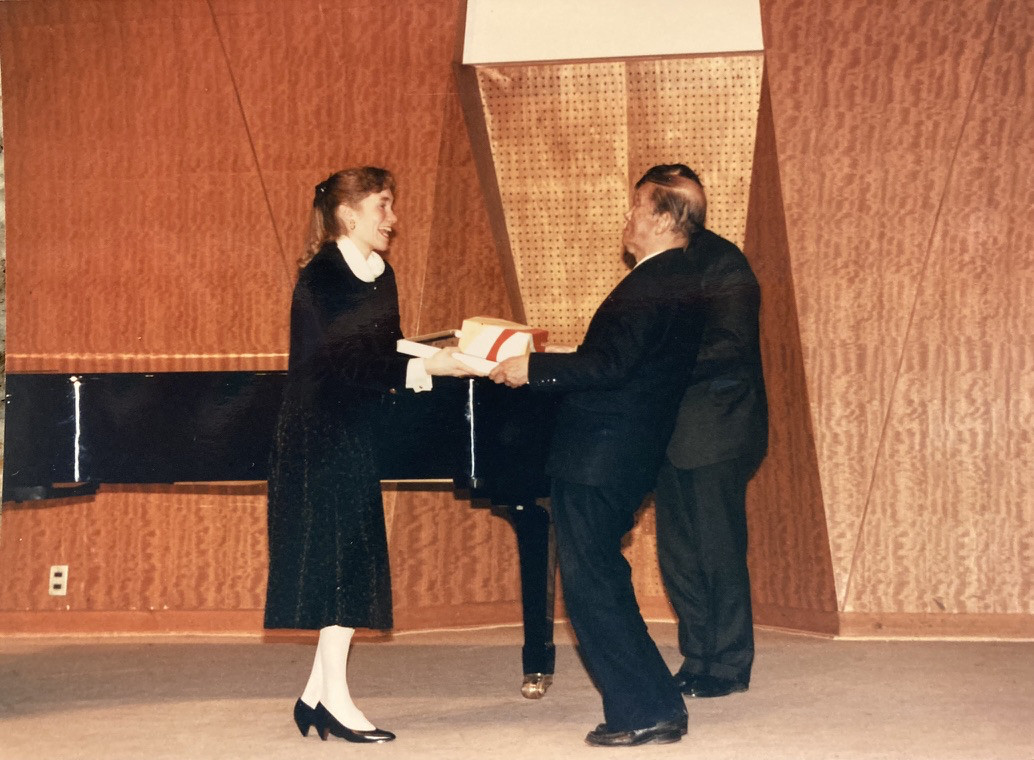
Dr. Suzuki and Amanda after her graduation recital
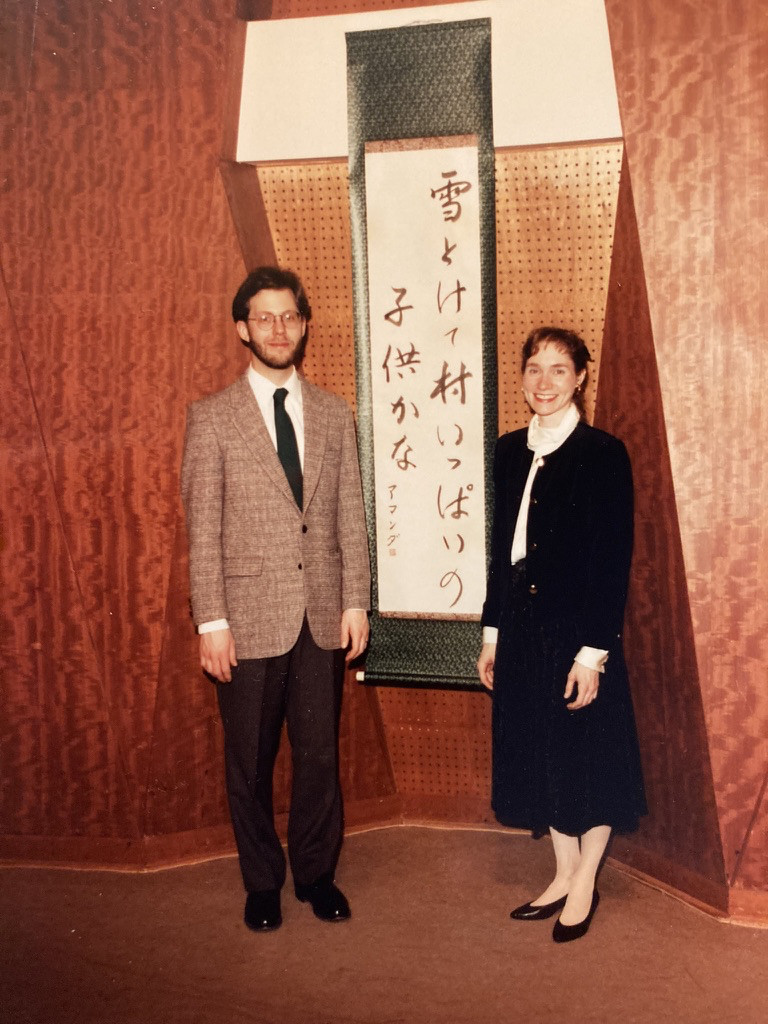
Bruce Boiney (piano kenkyusei and Amanda’s accompanist) and Amanda beside her graduation shuji

